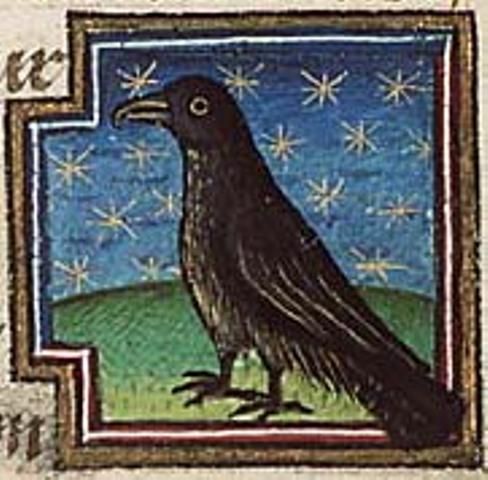















Parzival
by Wolfram von Eschenbach
ca. 1220?
German version of Perceval. It is distinguished not only for Wolfram's humor, but also because it fills out the beginning, adding three chapters before Chretien de Troyes' version starts. He also finishes the poem where Chretien left off, taking Parzival to the castle of the Fisher King, asking the question "What ails you, uncle?" and thus restoring the Waste Land to fertility. He then becomes the new Grail King when the old king dies.
The beginning episodes details Parzival's father Gahmuret and his adventures in Baghdad. These are, of course, interpolations due to the political climate of the thirteenth century (i.e. the Crusades); Wolfram is also the first to say that the Knights Templar are the guardians of the Grail. He also explicitly ties the Grail to the house of Anjou, from which the Plantagenets--the rulers of England, such as Henry II and Richard I--were descended.
Moreover, he states that the Grail is a stone from Lucifer's crown, which fell with him from heaven (he calls it the "lapsit exillis"). It is possible (though not necessarily true) that he was unconsciously (or even consciously) referencing the Kaba'a in Mecca, though more likely he was refering to the Philosopher's Stone.
It contains a curious little idea that Prester John is the son of Feirfiz, half-brother of Parzival, and Repanse de Shoye, the grail maiden.
This romance is also famous for having inspired Richard Wagner's opera Parsifal, one of Hitler's favorites.
As for the grail itself, it is called the lapsit exillis. Oddly enough, Wolfram's concept of the grail is not as a chalice or dish, as it is usually conceived, but as the stone from Lucifer's crown. Technically, lapsit exillis is nonsense--it looks like Latin, but it isn't. However, the words may actually be the following:
lapsit:
lapis: stone
lapsus: fallen
exillis
exilis: meager, poor
exsilium: exile
elixir: a potion
ex illis: from them
Any of these meanings fits Wolfram's depiction of the Grail--a stone fallen from heaven that, when used, can work as an elixer of life. Moreover, the stone is from the crown of the exiled prince of angels, Satan, who is now in rather meager estates.
It is also remeniscent of the Philosopher's Stone, or to the Kaba'a in Mecca, the latter object perhaps completing the Middle Eastern/Crusader influence on the work.

Back to "P" | Back to JCE
Home
Mary Jones © 2004